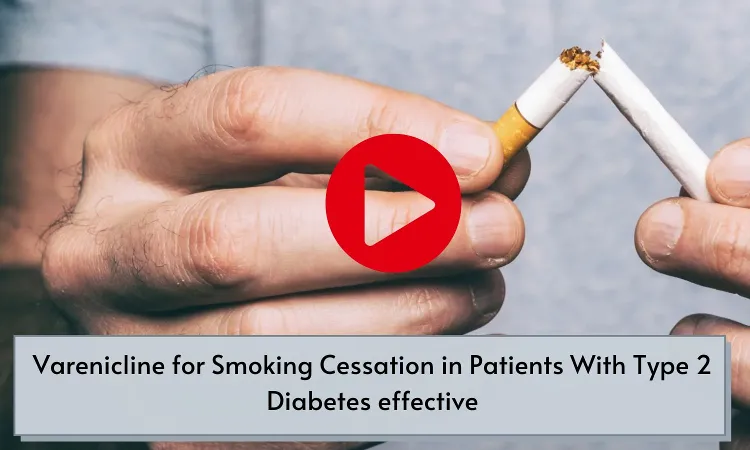- Home
- Medical news & Guidelines
- Anesthesiology
- Cardiology and CTVS
- Critical Care
- Dentistry
- Dermatology
- Diabetes and Endocrinology
- ENT
- Gastroenterology
- Medicine
- Nephrology
- Neurology
- Obstretics-Gynaecology
- Oncology
- Ophthalmology
- Orthopaedics
- Pediatrics-Neonatology
- Psychiatry
- Pulmonology
- Radiology
- Surgery
- Urology
- Laboratory Medicine
- Diet
- Nursing
- Paramedical
- Physiotherapy
- Health news
- Fact Check
- Bone Health Fact Check
- Brain Health Fact Check
- Cancer Related Fact Check
- Child Care Fact Check
- Dental and oral health fact check
- Diabetes and metabolic health fact check
- Diet and Nutrition Fact Check
- Eye and ENT Care Fact Check
- Fitness fact check
- Gut health fact check
- Heart health fact check
- Kidney health fact check
- Medical education fact check
- Men's health fact check
- Respiratory fact check
- Skin and hair care fact check
- Vaccine and Immunization fact check
- Women's health fact check
- AYUSH
- State News
- Andaman and Nicobar Islands
- Andhra Pradesh
- Arunachal Pradesh
- Assam
- Bihar
- Chandigarh
- Chattisgarh
- Dadra and Nagar Haveli
- Daman and Diu
- Delhi
- Goa
- Gujarat
- Haryana
- Himachal Pradesh
- Jammu & Kashmir
- Jharkhand
- Karnataka
- Kerala
- Ladakh
- Lakshadweep
- Madhya Pradesh
- Maharashtra
- Manipur
- Meghalaya
- Mizoram
- Nagaland
- Odisha
- Puducherry
- Punjab
- Rajasthan
- Sikkim
- Tamil Nadu
- Telangana
- Tripura
- Uttar Pradesh
- Uttrakhand
- West Bengal
- Medical Education
- Industry
"BIDI years" may assess an individual's exposure to bidi smoke during perioperative period

When you inhale tobacco smoke, you're breathing in a complicated combination of particulate matter (PM), volatile and semivolatile chemicals in suspension, and combustion gases. These chemicals are linked to well-documented cardiac problems in smokers, which enhance postoperative morbidity.
The idea of "pack-years" is an appropriate method for quantifying a person's exposure to cigarette smoke. However, it is difficult to depend on this evaluation due to the fact that there are numerous varieties of tobacco leaves with differing degrees of processing and, therefore, varying concentrations of nicotine, as well as varying quantities of cigarettes per pack produced by various firms on the market.
In 2015, an estimated 108 million males and 11 million females aged 15 to 69 years used tobacco in any form in India. Therefore, it is necessary to measure exposure to bidi smoke in order to estimate perioperative morbidity. The purpose of the research was to examine the nicotine and CO levels of bidis and cigarettes. Rcently published study has used this to expound on the notion of "Bidi pack-years" and its relationship to cigarette pack-years.
Thirty samples of bidis and cigarettes were picked at random from a study of popular brands used by Indian smokers. Using high-pressure liquid chromatography and gas chromatography, respectively, the nicotine and carbon monoxide (CO) concentrations were determined. The mean nicotine level in 30 specimens of various Bidis and Cigarettes was 214.46 ± 57.8 and 616.31 ± 22.6 mg/dL, respectively (P < 0.001). Cigarettes had a mean CO concentration of 15,57 5.88 parts per million, but bidis had a CO value of 70,4 22.08 parts per million (P 0.001). The weight of a single cigarette is 0.56 times that of a single bidi. Based on the nicotine content, 43 bidis per day per year are calculated as the equivalent pack years.
Bidis and cigarettes are distinct entities because to statistically significant differences in their ingredients. Due to the fluctuation in the quantity of bidis each pack, it is advocated that "bidi-years" rather than "bidi pack-years" be used to assess an individual's exposure to bidi smoke. On the basis of the nicotine content of bidis and cigarettes, it is recommended that the equivalent for 1 pack-year of cigarettes or 20 cigarette years is 43 bidis a day per year. As each bidi stick has an average nicotine concentration 0.46 times that of cigarettes, abstinence for 6–7 h may restore nicotine levels to normal, as opposed to the 12–14 h recommended for cigarettes. Due to the fact that the CO content of bidis is 4.5 times that of cigarettes, it is recommended that the minimum length of smoking cessation prior to surgical operations be 24 hours as opposed to 6 hours for cigarettes.
Reference –
Datta, Rashmi1; Singh, Shalendra2,; Joshi, Arjun3; Marwah, Vikas4 Concept of BIDI years, Lung India: Jul–Aug 2022 - Volume 39 - Issue 4 - p 337-342
doi: 10.4103/lungindia.lungindia_595_2
MBBS, MD (Anaesthesiology), FNB (Cardiac Anaesthesiology)
Dr Monish Raut is a practicing Cardiac Anesthesiologist. He completed his MBBS at Government Medical College, Nagpur, and pursued his MD in Anesthesiology at BJ Medical College, Pune. Further specializing in Cardiac Anesthesiology, Dr Raut earned his FNB in Cardiac Anesthesiology from Sir Ganga Ram Hospital, Delhi.
Dr Kamal Kant Kohli-MBBS, DTCD- a chest specialist with more than 30 years of practice and a flair for writing clinical articles, Dr Kamal Kant Kohli joined Medical Dialogues as a Chief Editor of Medical News. Besides writing articles, as an editor, he proofreads and verifies all the medical content published on Medical Dialogues including those coming from journals, studies,medical conferences,guidelines etc. Email: drkohli@medicaldialogues.in. Contact no. 011-43720751


